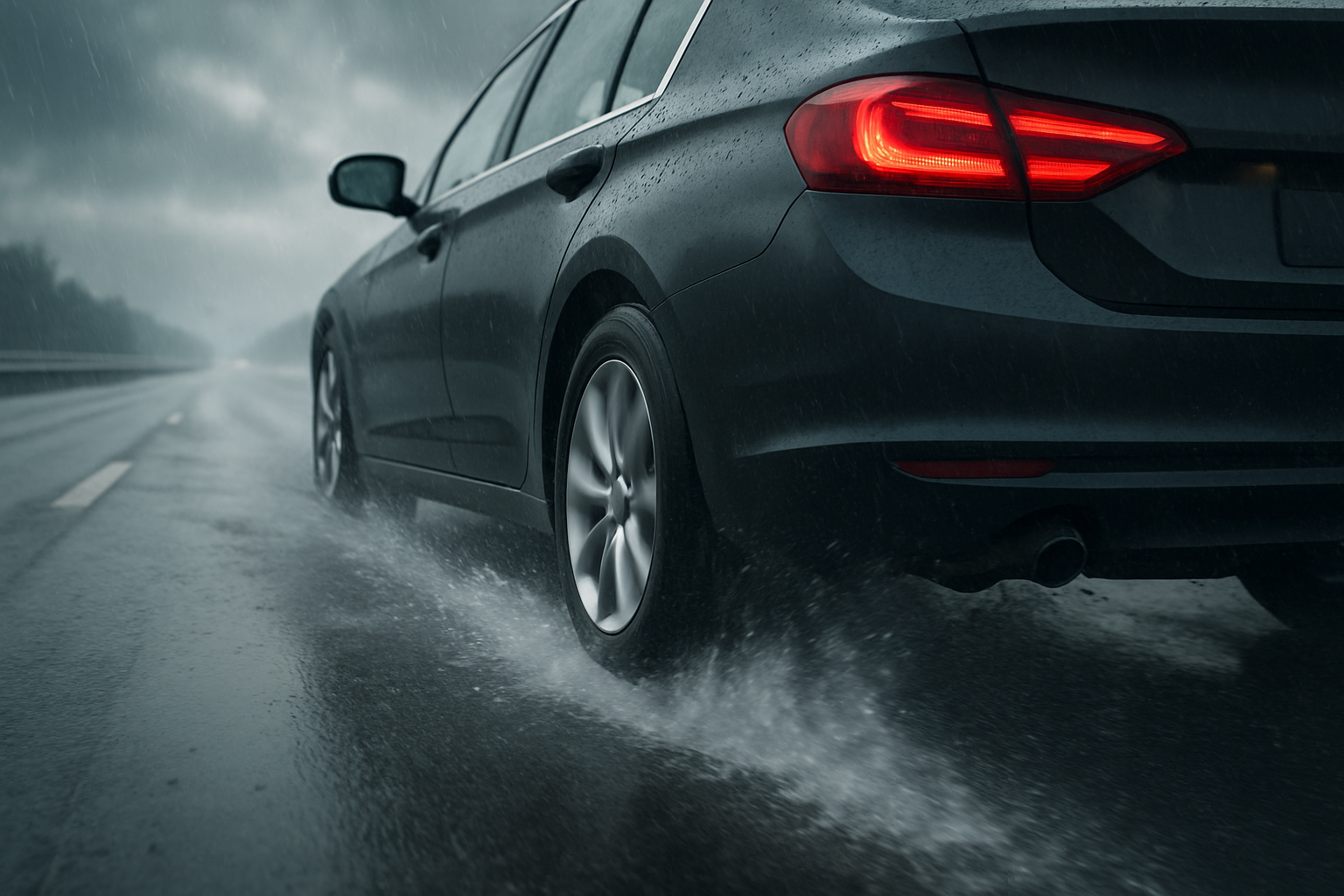Hydroplaning: The Hidden Peril of Wet Roads
Imagine cruising down a rain-soaked highway, your wipers working overtime, when suddenly your steering wheel feels light and unresponsive. In an instant, you're no longer in control of your vehicle. This terrifying scenario is all too real for drivers who encounter hydroplaning, a dangerous phenomenon that occurs when a layer of water separates your tires from the road surface. Let's dive into the science behind this slippery situation and explore how drivers can stay safe when the skies open up.

The risk of hydroplaning increases with water depth, tire wear, vehicle speed, and road conditions. Even a small amount of water, as little as 1/12 inch deep, can be enough to cause hydroplaning at high speeds. The first few minutes of rainfall are often the most dangerous, as water mixes with oil residue on the road, creating an especially slippery surface.
Tire Design: Your First Line of Defense
Modern tire technology has come a long way in combating hydroplaning. Tread patterns are specifically designed to channel water away from the contact patch – the area of the tire that touches the road. Deep grooves and sipes (small slits in the tread blocks) work together to create pathways for water to escape, maintaining crucial contact with the road surface.
Tire manufacturers invest heavily in research and development to create compounds and tread designs that optimize wet-weather performance. Some tires feature specially formulated rubber compounds that remain pliable in cold, wet conditions, enhancing grip. Others incorporate unique tread patterns that actually become more effective as they wear, ensuring consistent performance throughout the tire’s lifespan.
The Role of Vehicle Design in Wet-Weather Safety
While tires are the primary factor in preventing hydroplaning, overall vehicle design plays a crucial role as well. Aerodynamics can significantly impact a car’s behavior in wet conditions. Well-designed underbody panels and rear diffusers can help manage water spray, reducing the amount of water that reaches the rear tires and improving visibility for following vehicles.
Suspension geometry and weight distribution also affect a vehicle’s susceptibility to hydroplaning. Cars with a more even weight distribution and properly tuned suspension systems tend to maintain better contact with the road in wet conditions. Additionally, electronic stability control systems can help drivers maintain control if hydroplaning does occur, by selectively applying brakes to individual wheels and reducing engine power.
Advanced Driver Assistance Systems: A Helping Hand
As vehicle technology advances, new systems are being developed to aid drivers in wet conditions. Some high-end vehicles now feature rain-sensing wipers that automatically adjust speed based on the amount of water detected on the windshield. This helps ensure optimal visibility without driver intervention.
More sophisticated systems use sensors to detect standing water on the road ahead and adjust the vehicle’s speed and traction control settings accordingly. Some experimental systems even use predictive algorithms and connected vehicle technology to warn drivers of potentially hazardous road conditions based on data from other vehicles and weather stations.
Driving Techniques to Stay Grounded
While technology can help mitigate the risks of hydroplaning, driver skill and awareness remain crucial. One of the most effective techniques for preventing hydroplaning is simply reducing speed in wet conditions. This gives tires more time to channel water away and maintains better contact with the road surface.
Proper steering technique is also important. Smooth, gradual inputs help maintain stability and reduce the likelihood of losing control. If you do feel your vehicle beginning to hydroplane, resist the urge to brake or make sudden steering corrections. Instead, ease off the accelerator and steer gently in the direction you want to go until you feel the tires regain traction.
Regular vehicle maintenance is another key factor in wet-weather safety. Ensuring proper tire inflation, rotation, and replacement when tread depth becomes too low can significantly reduce the risk of hydroplaning. Additionally, keeping your windshield wipers in good condition and your washer fluid reservoir full will help maintain visibility in challenging conditions.
The Future of Wet-Weather Driving
As climate change leads to more frequent and intense rainfall in many parts of the world, the importance of wet-weather driving safety is likely to increase. Researchers and engineers are exploring new technologies to further improve vehicle performance in these conditions.
One promising area of development is in smart road surfaces that can actively channel water away from traffic lanes. These systems use porous materials and clever drainage designs to reduce standing water and improve traction. Some experimental surfaces even incorporate heating elements to prevent ice formation in cold climates.
Another exciting frontier is the development of advanced tire materials that can dynamically adjust their properties based on road conditions. Imagine a tire that could instantly become softer and more pliable when it detects wet roads, then firm up again for optimal performance in dry conditions.
As we look to the future of automotive safety, it’s clear that addressing the challenges of wet-weather driving will remain a priority. By combining innovative vehicle and infrastructure technologies with improved driver education and awareness, we can work towards a future where hydroplaning becomes a relic of the past, ensuring safer journeys for all road users, rain or shine.





